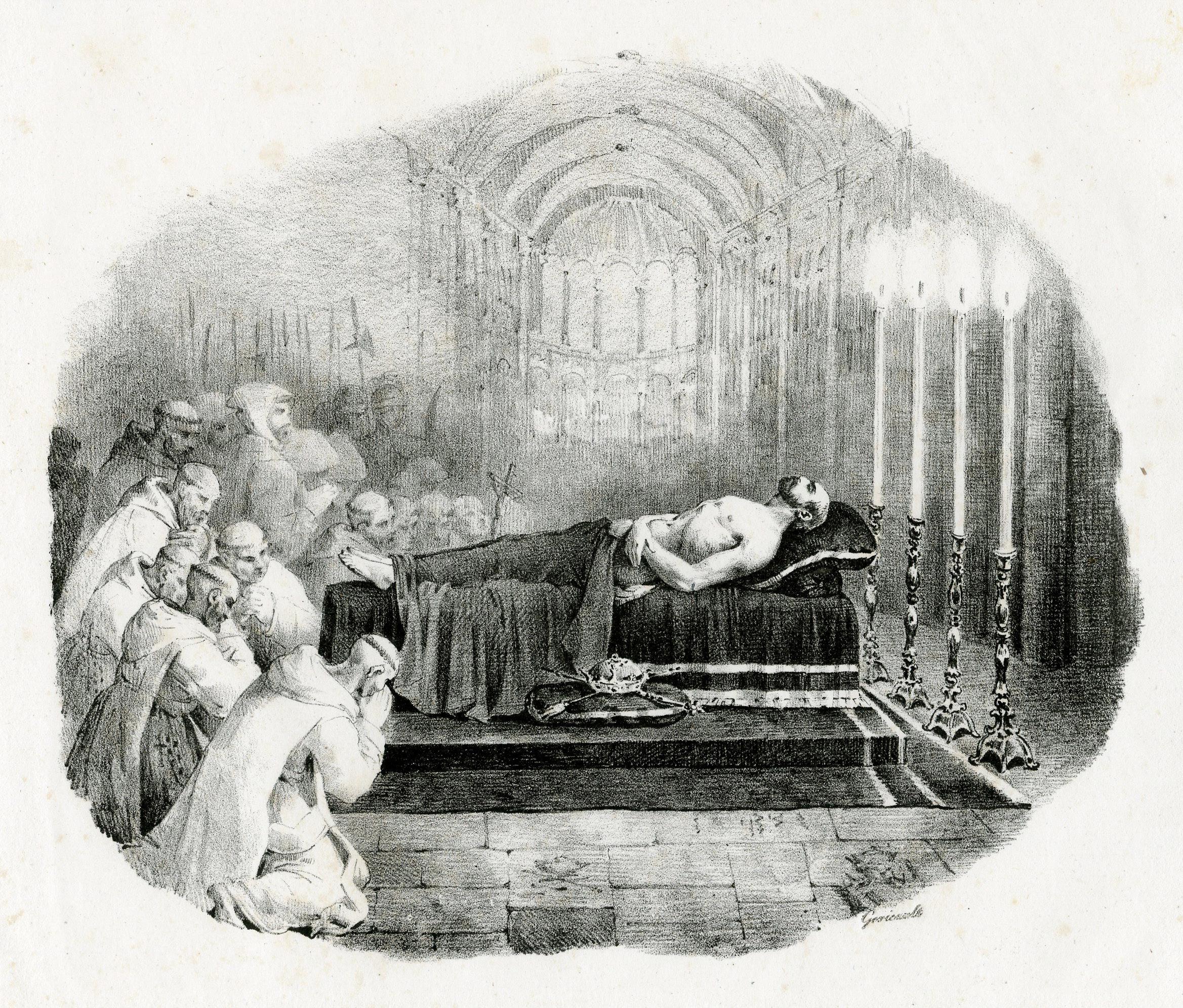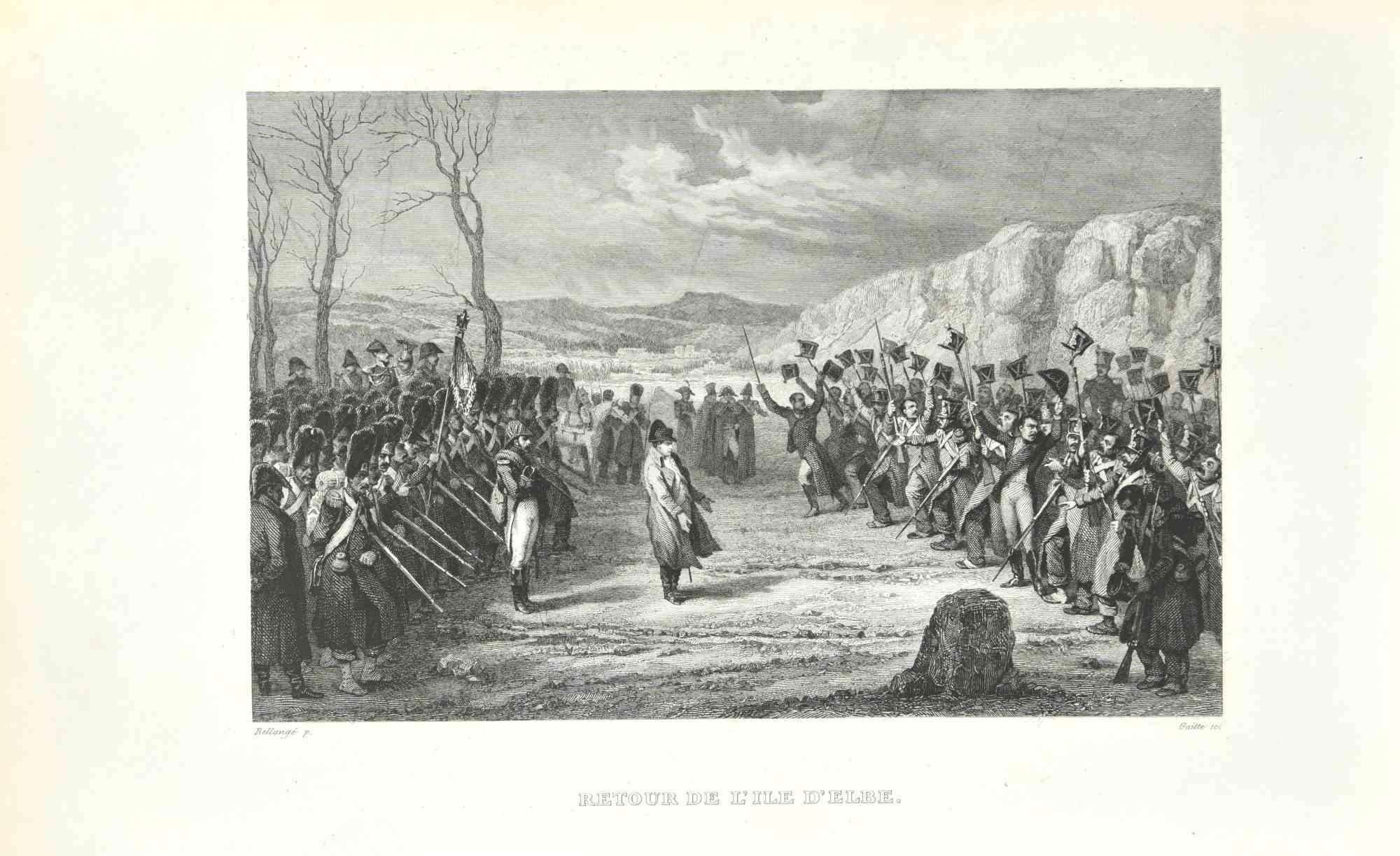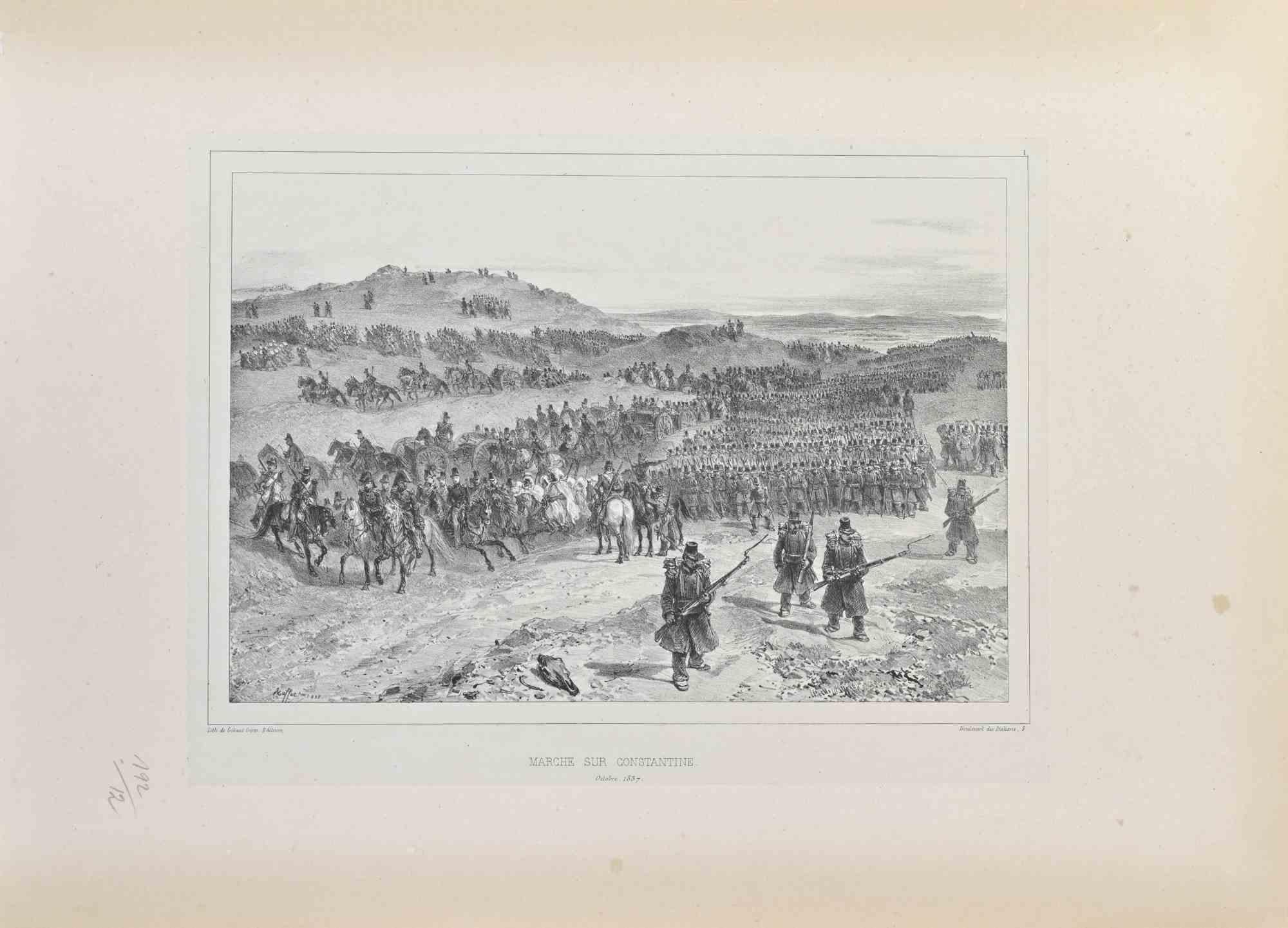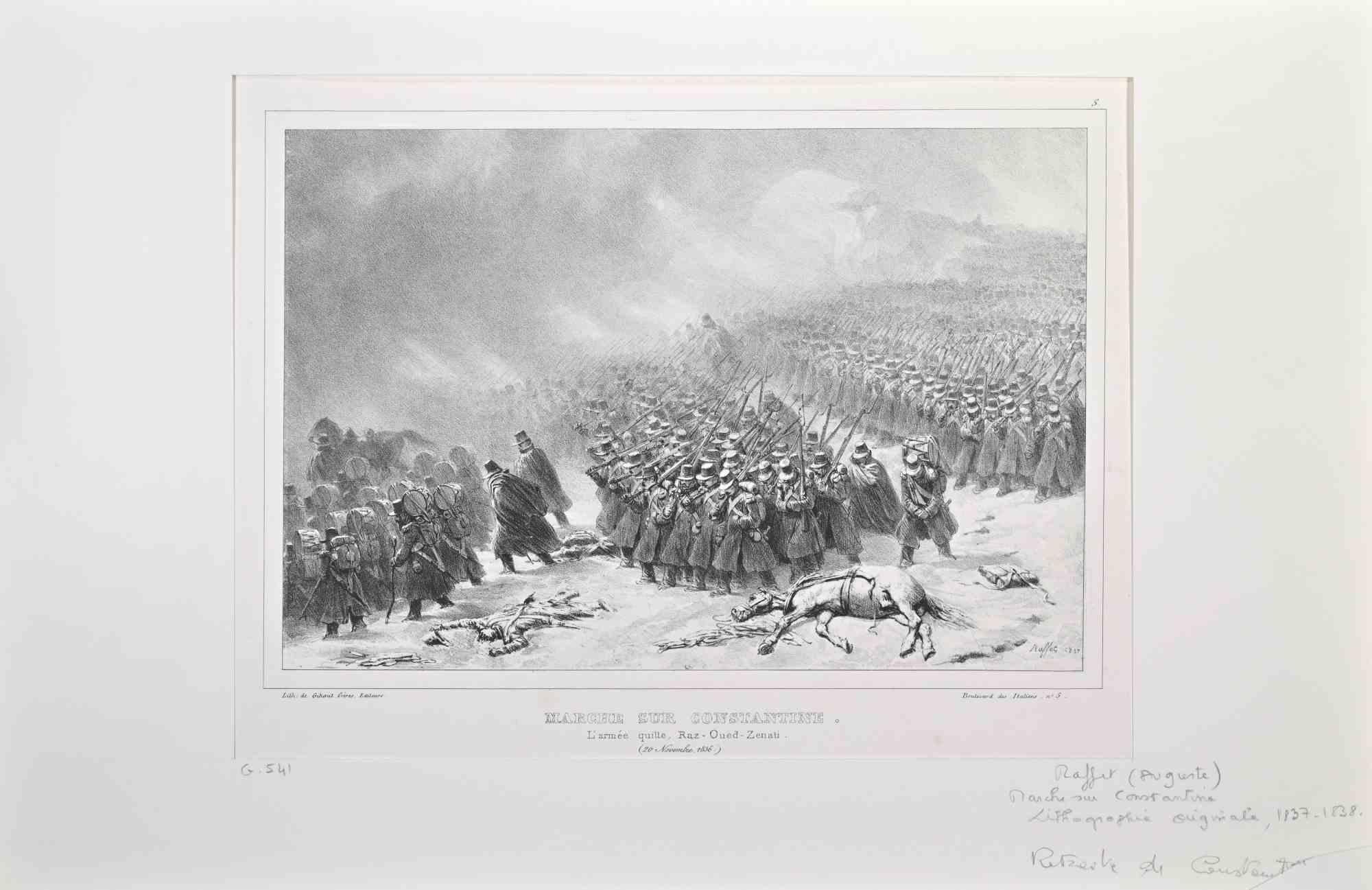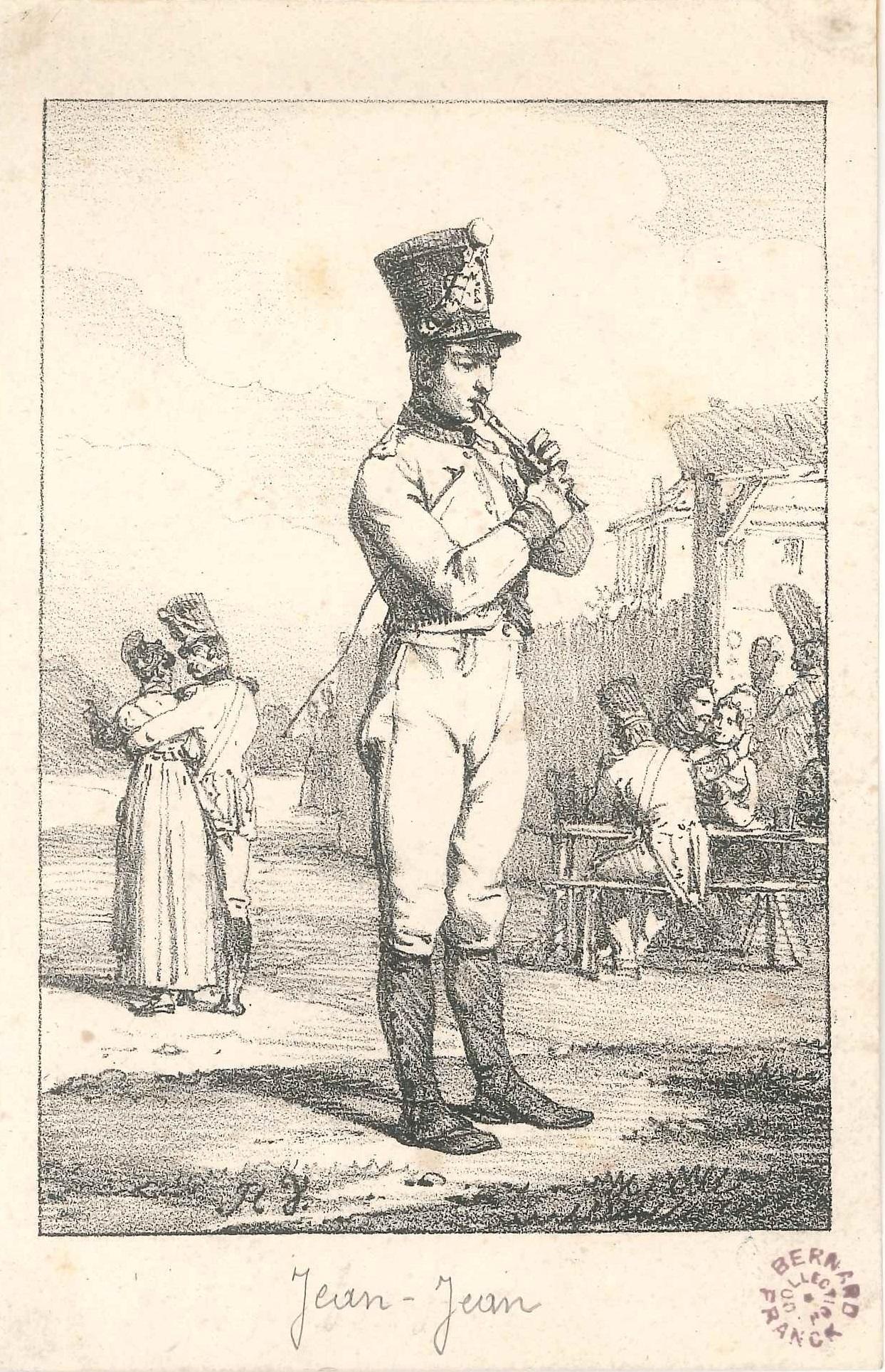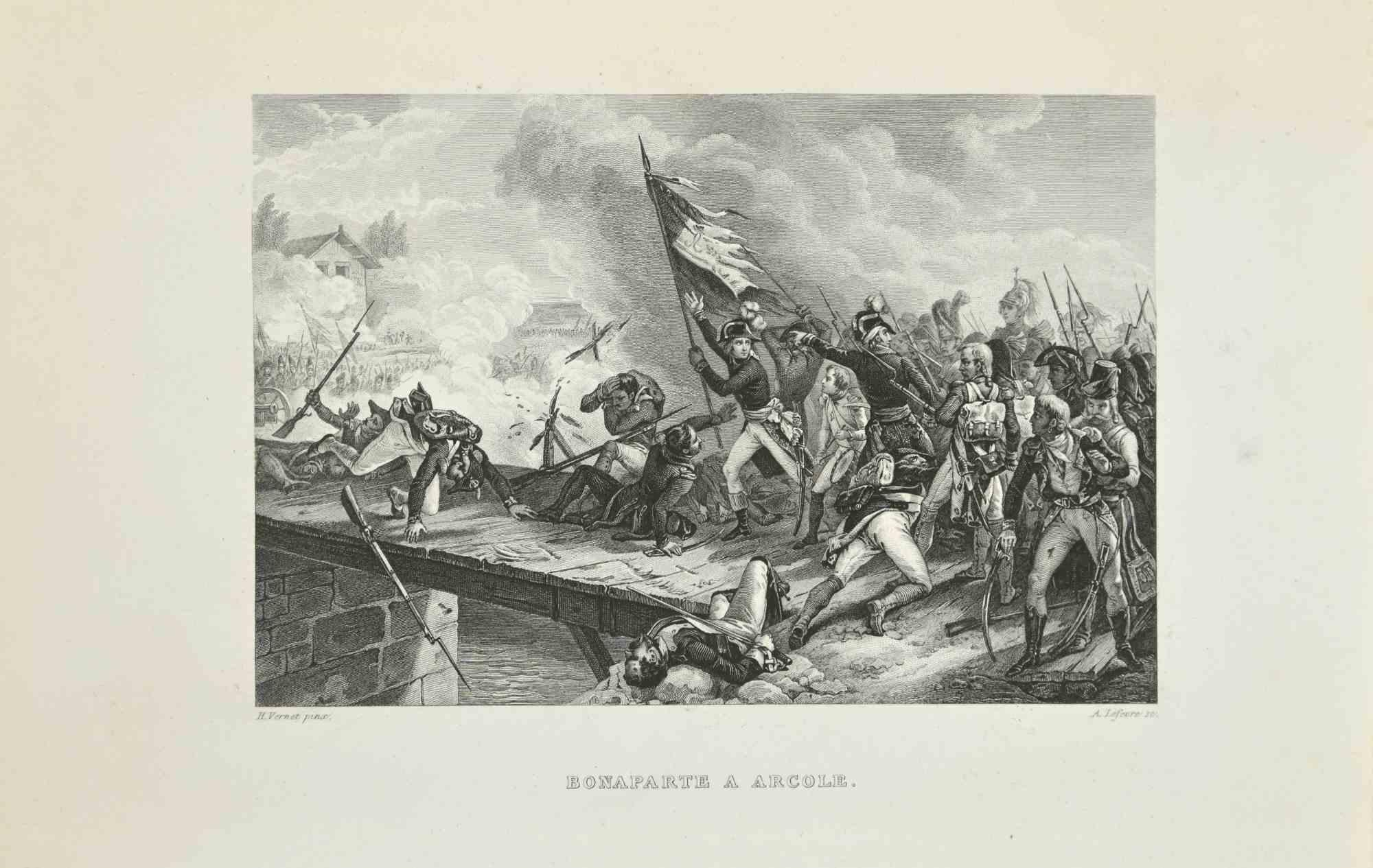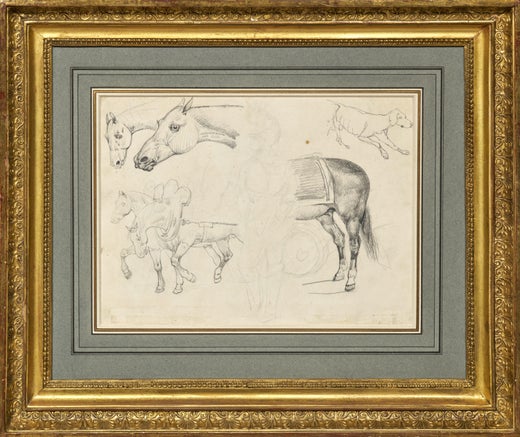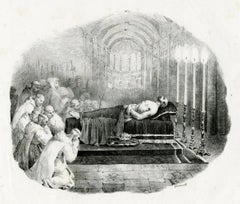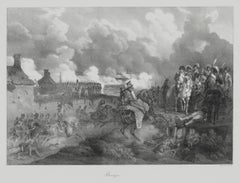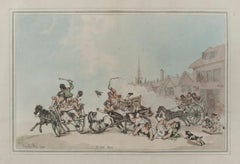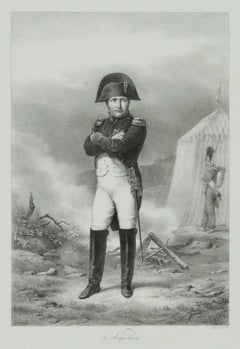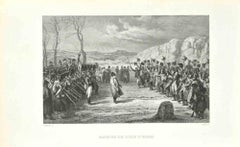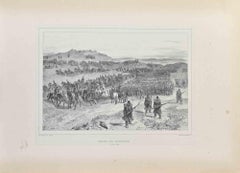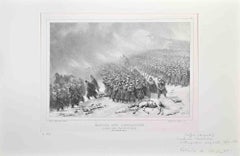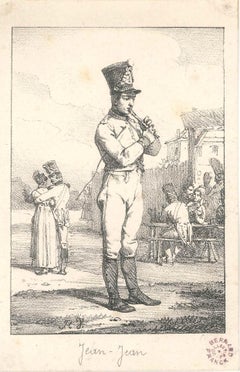Articles similaires à Passage du Mont Saint-Bernard
Vous voulez plus d'images ou de vidéos ?
Demander au vendeur plus d'images ou de vidéos
1 sur 11
Jean Louis Andre Theodore GericaultPassage du Mont Saint-Bernard1822
1822
2 193,83 €
À propos de cet article
Théodore Géricault (1791-1824)
Passage du Mont Saint-Bernard
Lithographie, 1822
Signé et titré dans la pierre
Tel que publié dans Arnault "Vie politique et militaire de Napoléon".
Condit : Excellent, vieillissement conforme aux attentes
Taille de l'image : 14 x 161 1/4 pouces
Taille de la feuille : 18 7/8 x 24 3/8 pouces
Référence : Delteil 44 iv/IV, état publié
Théodore Géricault
Peintre français
Née : 26 septembre 1791 Rouen France
Décédé : 26 janvier 1824 (à l'âge de 32 ans) Paris France
Œuvres notables : "Le Chasseur à la charge" "Le Radeau de la Méduse"
Mouvement / Style : Romantisme
Théodore Géricault, de son vrai nom Jean-Louis-André-Théodore Géricault, (né le 26 septembre 1791 à Rouen - mort le 26 janvier 1824 à Paris), peintre qui a exercé une influence déterminante sur le développement de l'art romantique en France. Géricault était un dandy et un cavalier passionné dont les peintures dramatiques reflètent sa personnalité flamboyante et passionnée.
En tant qu'étudiant, Géricault a appris les traditions de l'art sportif anglais auprès du peintre français Carle Vernet, et il a développé une remarquable facilité à capturer le mouvement des animaux. Il maîtrise également la construction et la composition de figures classiques auprès de l'académicien Pierre-Narcisse, baron Guérin. Un autre élève de Guérin, Eugène Delacroix, a été profondément influencé par Géricault, trouvant dans son exemple un point de départ important pour son propre art.
Comme en témoigne sa première œuvre majeure, Le Chasseur à la charge (1812), qui représente un officier à cheval sur un champ de bataille enfumé, Géricault est attiré par le style coloriste du peintre baroque Peter Paul Rubens et par l'utilisation de sujets contemporains à la manière d'un collègue plus âgé, le peintre Antoine-Jean Gros. Au Salon de 1814, le Cuirassier blessé de Géricault choque la critique par son sujet triste et ses couleurs sombres. Lors de son séjour à Florence et à Rome (1816-17), il se passionne pour Michelangelo et l'art baroque. Son principal projet à cette époque est la Course du cheval sans cavalier, une composition héroïque en frise (jamais achevée) représentant une course dangereuse qui avait lieu tous les ans.
De retour en France, Géricault dessine un ensemble de lithographies sur des sujets militaires qui sont considérées comme l'un des premiers chefs-d'œuvre dans ce domaine. Le chef-d'œuvre de Géricault est le grand tableau intitulé Le Radeau de la Méduse (vers 1819). Cette œuvre dépeint les suites d'un naufrage français contemporain, dont les survivants ont embarqué sur un radeau et ont été décimés par la famine avant d'être sauvés en mer. Le naufrage a des implications politiques scandaleuses dans le pays - le capitaine incompétent, qui avait obtenu le poste grâce à ses relations avec le gouvernement de la Restauration des Bourbons, s'est battu pour sauver sa peau et celle des officiers supérieurs tout en laissant mourir les subalternes - et le tableau de Géricault représentant le radeau et ses habitants est donc accueilli avec hostilité par le gouvernement. Le réalisme macabre de l'œuvre, son traitement de l'incident du radeau comme une tragédie épique et héroïque, et la virtuosité de son dessin et de ses tonalités se combinent pour donner à la peinture une grande dignité et la porter bien au-delà du simple reportage contemporain. La représentation des morts et des mourants, élaborée dans le cadre d'une composition dramatique et soigneusement construite, aborde un sujet contemporain avec une passion remarquable et sans précédent.
Déçu par l'accueil réservé au Radeau de la Méduse, Géricault emporte le tableau en Angleterre en 1820, où il connaît un succès sensationnel. Il y reste deux ans, appréciant la culture équine et produisant un ensemble de lithographies, d'aquarelles et d'huiles représentant des jockeys et des chevaux. À son retour en France, son amitié avec Étienne Georget, pionnier des études psychiatriques, lui inspire une série de portraits de victimes de la folie, chacun étant considéré comme un "type" de maladie, dont la Kleptomanie et le Délire de commandement militaire. Des accidents de cheval répétés et des infections tuberculeuses chroniques ruinent sa santé et il meurt après une longue période de souffrance.
Cet article a été récemment révisé et mis à jour par Amy Tikkanen.
Une impression de richesse
- Créateur:Jean Louis Andre Theodore Gericault (1791 - 1824, Français)
- Année de création:1822
- Dimensions:Hauteur : 35,56 cm (14 po)Largeur : 41,28 cm (16,25 po)
- Support:
- Mouvement et style:
- Période:
- État:
- Adresse de la galerie:Fairlawn, OH
- Numéro de référence:Vendeur : FA40401stDibs : LU14016412772
Jean Louis Andre Theodore Gericault
Théodore Géricault est né à Rouen en 1791 dans une famille aisée de la Manche. Son père, magistrat et riche propriétaire terrien, dirigeait une fabrique de tabac. La famille s'installe à Paris vers 1796, et en 1810 Théodore Géricault entre dans le Studio de Carle Vernet, où il rencontre son fils Horace. Il étudie ensuite avec Pierre-Narcisse Guérin avant de s'inscrire le 5 février 1811 à l'École des Beaux-Arts de Paris, où il suit une formation classique basée sur la copie des maîtres du musée du Louvre. Géricault est exclu de l'École des Beaux-Arts en 1812 pour son inconduite ; il loue alors une arrière-boutique rue de la Michodière, où il peint l'un de ses premiers chefs-d'œuvre, un portrait d'un officier de la garde impériale (le lieutenant Dieudonné) chargeant alors qu'il est à cheval. Ce tableau est exposé au Salon de 1812 et lui vaut la médaille d'or à l'âge de 21 ans ! Géricault devient un peintre recherché, spécialisé dans les sujets militaires. Géricault tombe amoureux de sa tante Alexandrine Caruel de Martin (l'épouse du frère de sa mère). Agée de 28 ans de moins que son mari, elle n'avait que 6 ans de plus que lui. De cette liaison, qui dura de nombreuses années, naquit en 1818 un fils, Georges-Hippolyte. Après un bref engagement dans la Compagnie des mousquetaires gris du roi Louis XVIII, Géricault, déçu de ne pas avoir obtenu le prix de Rome, passe deux ans en Italie. À son retour en 1817, il se lance dans la création de son chef-d'œuvre, Le Radeau de la Méduse, qui sera exposé au Louvre en 1819 et sera mal accueilli par la critique. La présentation du Radeau à Londres en 1820 amène Géricault dans la capitale anglaise, d'abord pour une période de deux mois entre avril et juin 1820, puis en 1821 après un retour sur le continent et un séjour à Bruxelles. Le tableau reçoit un accueil triomphal en Angleterre (en partie pour des raisons politiques opposées à celles qui avaient conduit à son échec en France), et 50 000 visiteurs affluent à la galerie de Bullock où il est exposé pendant six mois. En novembre 1821, Géricault rentre chez lui très affaibli par une maladie vénérienne contractée probablement lors de son séjour en Angleterre. Il tombe plusieurs fois de cheval et, en août 1823, se casse le dos en tombant. Il meurt à l'âge de trente-deux ans, le 24 janvier 1824, après une longue agonie.
À propos du vendeur
5,0
Vendeur reconnu
Ces vendeurs prestigieux sont des leaders du secteur. Ils représentent le summum en matière de qualité et de design.
Vendeur Platine
Vendeurs premium dont la note est supérieure à 4,7 et le délai de réponse de 24 heures maximum
Établi en 1978
Vendeur 1stDibs depuis 2013
808 ventes sur 1stDibs
Temps de réponse habituel : <1 heure
Associations
International Fine Print Dealers Association
- ExpéditionRecherche du devis...Expédition depuis : Akron, OH
- Politique des retours
Certaines parties de cette page ont été traduites automatiquement. 1stDibs ne garantit pas l'exactitude des traductions. L'anglais est la langue par défaut de ce site web.
Garantie d'authenticité
Bien qu'il soit peu probable que la situation se présente, dans le cas où vous rencontreriez un problème d'authenticité d'un article, contactez-nous dans un délai d'un an pour obtenir un remboursement intégral. DétailsGarantie de remboursement
Si votre article n'est pas conforme à la description, est endommagé pendant le transport ou ne vous est pas livré, contactez-nous sous 7 jours pour obtenir un remboursement intégral. DétailsAnnulation sous 24 heures
Vous disposez d'un délai de 24 heures pour annuler votre achat sans motif.Des vendeurs professionnels agréés
Nos vendeurs de renommée mondiale doivent respecter des normes strictes en matière de service et de qualité, afin de préserver l'intégrité de nos fiches produit.Garantie d'alignement des prix
Si vous constatez qu'un autre vendeur a mis en vente le même article à un prix inférieur sur un autre site, nous nous alignerons sur ce prix.Livraison en toute confiance à l'international
Notre réseau de transporteurs de premier ordre propose des options d'expédition spécialisées dans le monde entier, y compris des livraisons personnalisées.Plus d'articles de ce vendeur
Tout afficherGuillaume le Conquérant rapporté après sa mort à l'église de Boscherville
Par Jean Louis Andre Theodore Gericault
Guillaume le Conquérant rapporté après sa mort à l'église de Boscherville
Lithographie, 1823
Tel que publié dans "Voyages pittoresques et romantiques dans l'ancienne France" (tome II...
Catégorie
années 1820, Romantique, Estampes - Figuratif
Matériaux
Lithographie
Napoléon à Bautzen
Par Hippolyte Bellangé
Napoléon à Bautzen
Lithographie, 1822
Signé dans la pierre (voir photo)
De : Arnault, A. V.
Vie Politique et Militaire de Napoléon (120 planches)
Publié, Paris, Librairie Historiquem...
Catégorie
années 1820, Romantique, Estampes - Figuratif
Matériaux
Lithographie
Une course de charrettes
Par Thomas Rowlandson
Une course de charrettes
Gravure et aquatinte coloriées à la main, 1788
Signé dans la plaque (voir photo)
Publié par William Hollande, Londres
Inscrit dans la planche avec le titre, ...
Catégorie
années 1780, Romantique, Estampes - Figuratif
Matériaux
Aquatinte
Napoléon debout
Napoléon debout
Lithographie, 1822
Signé dans la pierre dans le coin inférieur gauche de l'image (voir photo)
De : Arnault, A. V.
Vie Politique et Militaire de Napoléon (120 planches...
Catégorie
années 1820, Romantique, Estampes - Figuratif
Matériaux
Lithographie
Un plaideur auquel manque malheureusement
Par Honoré Daumier
Un plaideur auquel manquent malheureusement les pieces les plus importantes, les pieces de cent sous.
(Un plaideur qui, malheureusement, ne dispose pas des détails les plus importan...
Catégorie
années 1860, Romantique, Estampes et éditions
Matériaux
Lithographie
L'ACTEUR . . . - On voit bien qu'il fait chaud... trois spectateurs
Par Honoré Daumier
L'ACTEUR . . . - On voit bien qu'il fait chaud . . . . . trois spectateurs dans la salle ..... faut-il commencer ? . . . .
LE DIRECTEUR .- Et encore un des trois est le vendeur D'EN...
Catégorie
années 1850, Romantique, Estampes - Figuratif
Matériaux
Lithographie
Suggestions
Retour d'Elba - eau-forte par Hippolyte Bellange - 1837
Par Hippolyte Bellangé
Le retour de l'île d'Elbe est une eau-forte réalisée par P.Bellanger en 1837.
Bonnes conditions.
L'œuvre est réalisée dans une composition équilibrée. l'œuvre et appartient à la su...
Catégorie
années 1830, Moderne, Estampes - Figuratif
Matériaux
Eau-forte
Marche Sur Constantine - Lithographie d'Auguste Raffet - 1837
Marche sur Constantine est une lithographie réalisée par Auguste Raffet en 1837.
Signée sur la plaque.
Bon état
Catégorie
années 1830, Moderne, Estampes - Figuratif
Matériaux
Lithographie
Marche Sur Constantine - Lithographie d'Auguste Raffet - 1837
Marche sur Constantine est une lithographie réalisée par Auguste Raffet en 1837.
Signé sur la plaque.
Bon état avec des rousseurs.
Catégorie
années 1830, Moderne, Estampes - Figuratif
Matériaux
Lithographie
Jean-Jean - Lithographie originale d'Horace Vernet - Première moitié du XIXe siècle
Par Émile Jean-Horace Vernet
Jean-Jean est une belle lithographie en noir et blanc, réalisée par Horace Vernet (1789-1863).
Cette belle estampe originale, représentant un soldat ...
Catégorie
Début du XIXe siècle, Estampes - Figuratif
Matériaux
Lithographie
Bonaparte à Arcole - Gravure d'Horace Vernet - 1837
Par Émile Jean-Horace Vernet
Bonaparte à Arcole est une gravure réalisée par H. Vernet en 1837.
Bonnes conditions.
L'œuvre est réalisée dans une composition équilibrée. l'œuvre et appartient à la suite "AtlasB...
Catégorie
années 1830, Moderne, Estampes - Figuratif
Matériaux
Eau-forte
La bataille napoléonienne - gravure d'Horace Vernet - 1837
Par Émile Jean-Horace Vernet
Bataille napoléonienne est une gravure réalisée par Horace Vernet en 1837.
Bonnes conditions.
L'œuvre est réalisée dans une composition équilibrée. l'œuvre et appartient à la suite...
Catégorie
années 1830, Moderne, Estampes - Figuratif
Matériaux
Eau-forte
